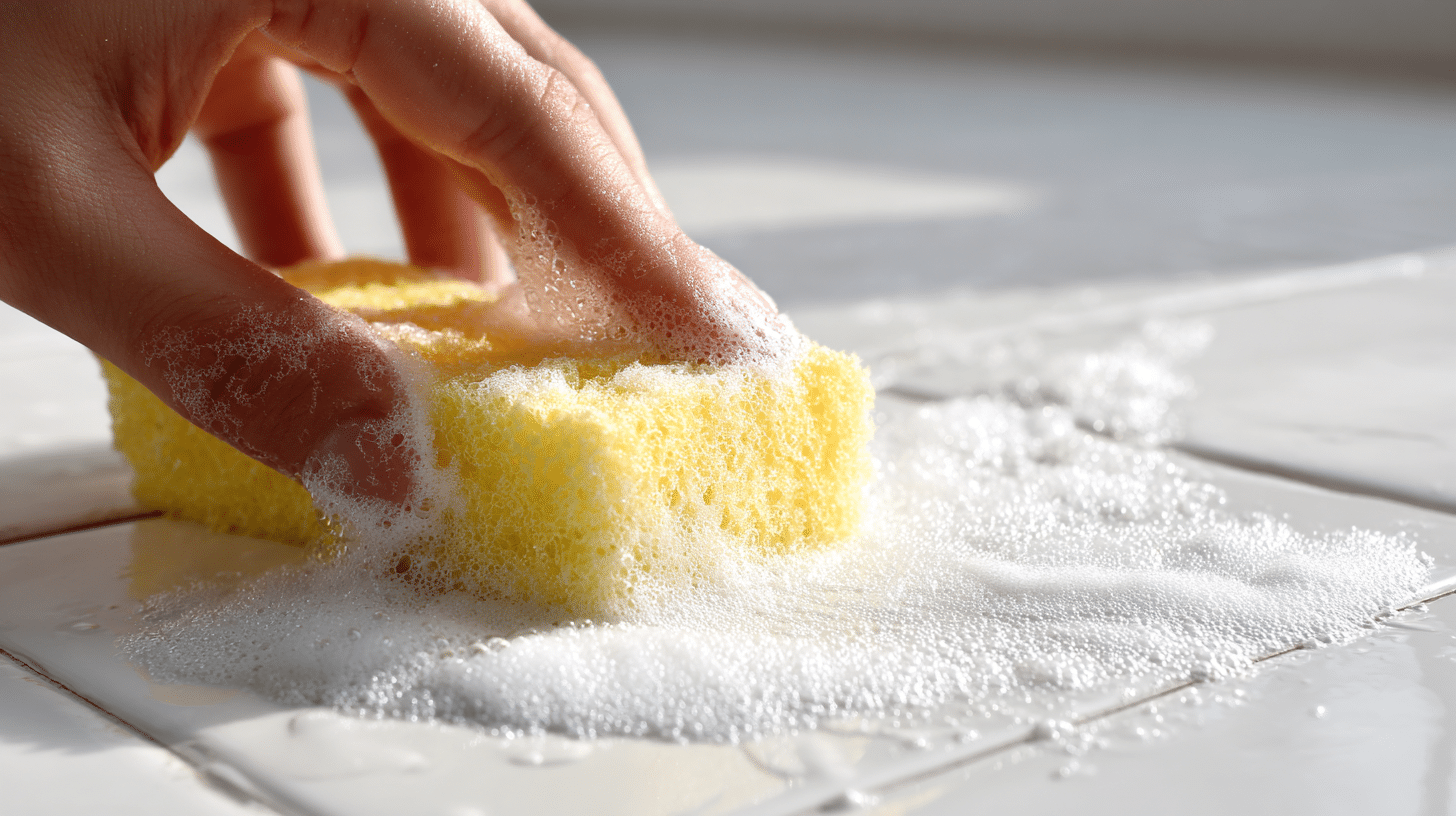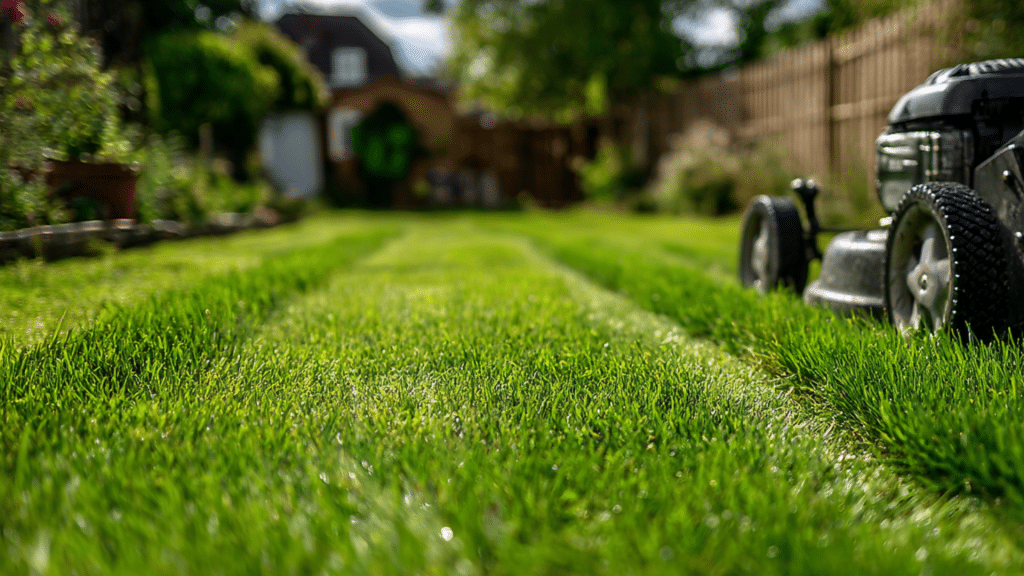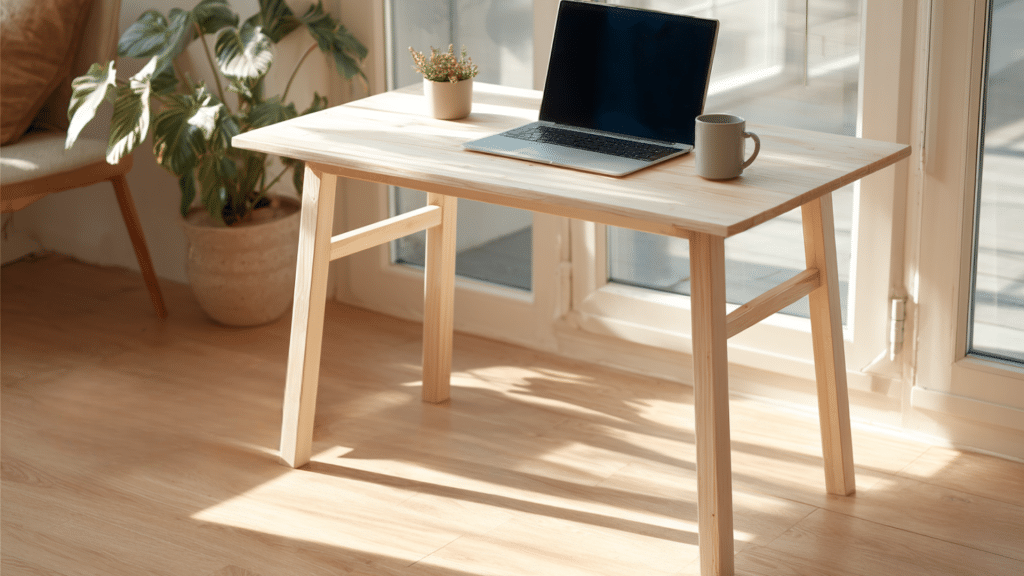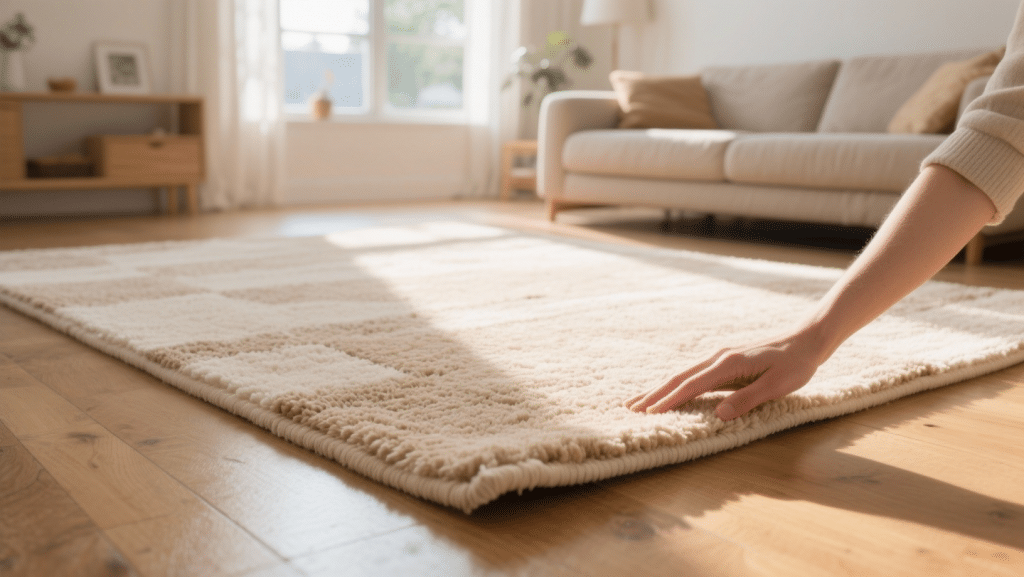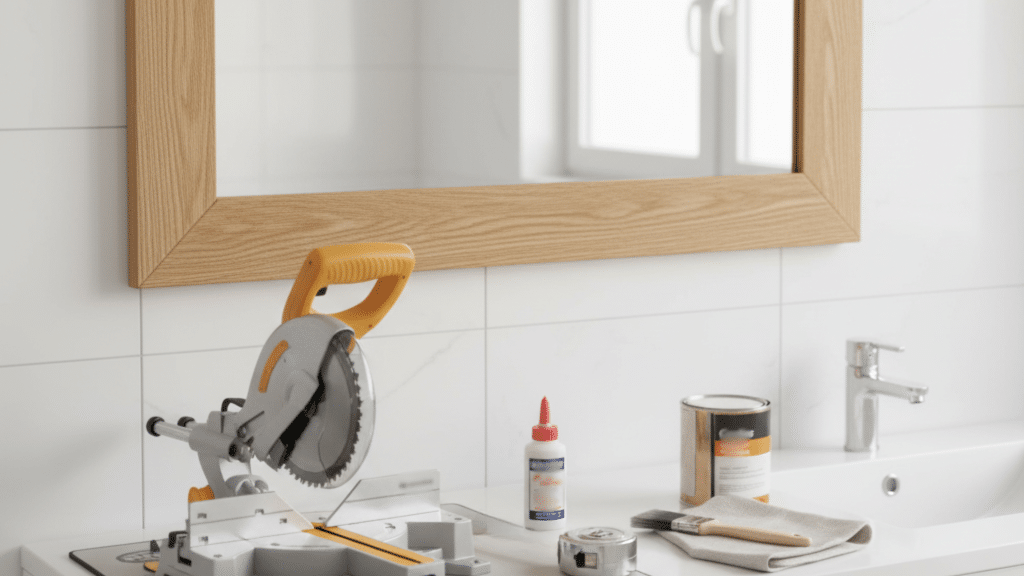Key Takeaways
-
You already have what you need – Most paint removal requires just a scratchy sponge, some paint thinner or vinegar, and clean rags. No expensive specialty products necessary.
-
Fresh paint vs dried paint needs different approaches – Wet paint wipes off easily with quick action, while dried paint needs heat, scraping, or soaking methods to break it down first.
-
Four proven methods cover every situation – Scraping for thick layers, heat for stubborn oil paint, solvents for fresh spills, and warm vinegar for a safe, chemical-free option. Pick based on your paint type and how long it’s been there.
Tools and Materials Needed
Before you start removing paint from your tiles, gather these basic supplies. Most items are likely already in your home, making this a relatively affordable fix.
| Tools / Materials | Purpose |
|---|---|
| Scratchy sponge or scrubber | To scrub off paint without damaging tiles |
| Paint thinner | To loosen and dissolve the paint |
| Small bowl or container | To hold a little paint thinner for dipping |
| Clean rag (wet) | To wipe away thinner and paint residue |
| Clean rag (dry) | To buff and finish the tiles |
| Gloves | To protect your hands while using a thinner |
| Ventilation (open window/fan) | To keep the air safe while working |
Step-By-Step: How To Get Paint Off Tile
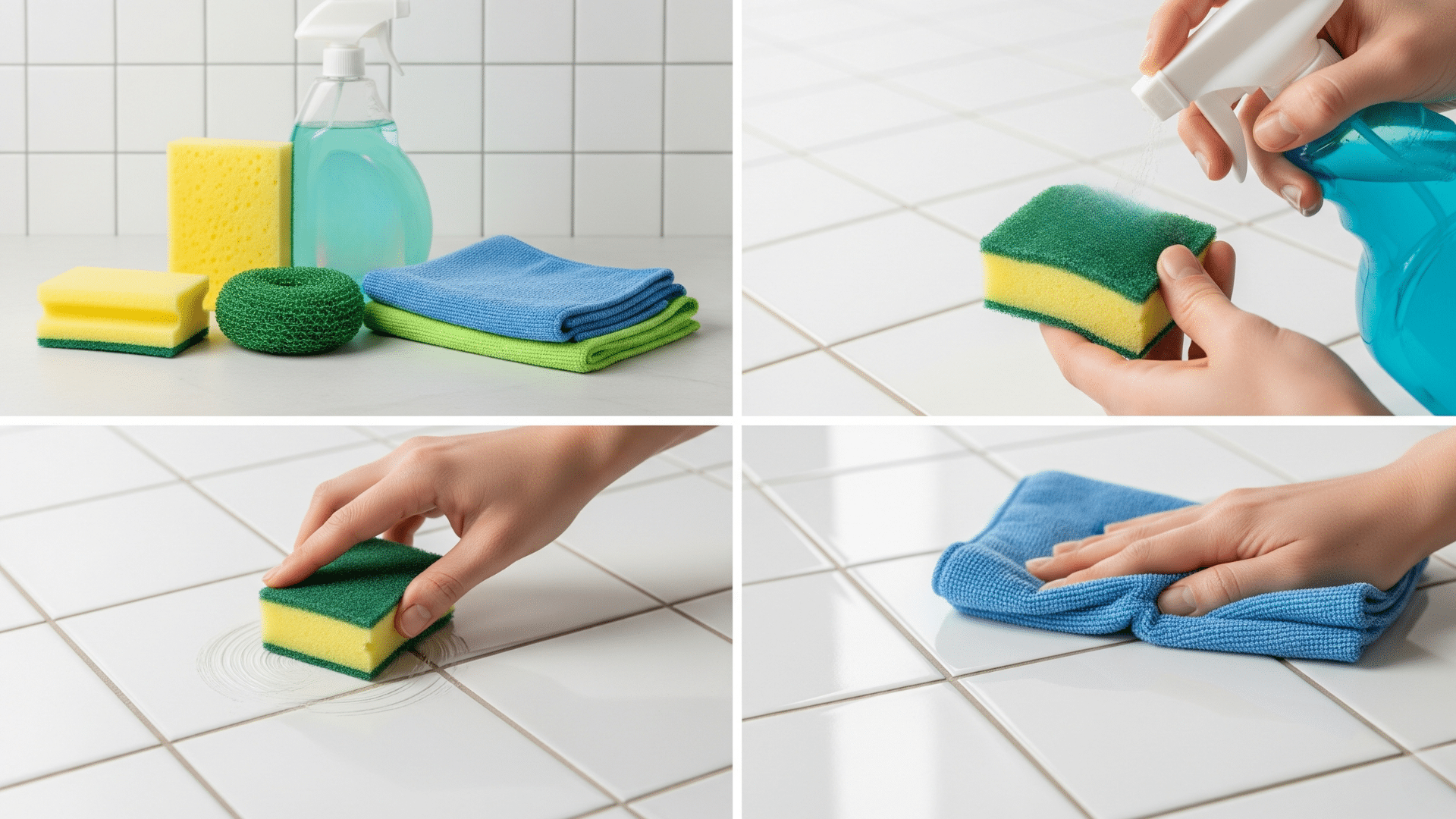
Now that you know what works, let me guide you through how to get paint off tile, the exact process I use to safely and effectively remove paint from tiles.
Step 1: Gather Your Supplies First
Before starting, make sure you have everything ready. This will save you time and prevent a mess. Keep your scrubber, sponge, any soap cleaner, and clean cloths close by.
Step 2: Choose the Right Scrubber
Select a sponge with a soft side and a scratchy side. The scratchy side is what really helps loosen dried paint without damaging your tiles.
Step 3: Prepare Your Sponge
Dab a small amount of cleaner onto the scratchy side of the sponge. You don’t need to soak it, just enough to wet the surface. Too much thinner will make the area messy.
Step 4: Start Rubbing Gently
Press the scratchy side of the sponge against the paint spot. Rub in small, firm circles. You’ll see the paint start to lift after a few seconds.
Step 5: Work on Tough Spots with Pressure
If you have thicker or raised paint spots, press a little harder with your finger behind the sponge. The combination of pressure and thinner will help remove even the stubborn areas.
Step 6: Clean the Surface After Removal
Once the paint is gone, let the tile dry for a moment. Then, dip a clean rag in plain water and wipe the area. This will remove any leftover paint thinner and keep your tiles safe.
Step 7: Finish with A Fresh Wipe
Finally, use a dry cloth to gently buff the tiles. This step leaves your tiles clean, shiny, and free from both paint and residue.
Effective Techniques for Paint Removal on Tile
Different paint situations call for different approaches. These techniques have been used numerous times and are effective, depending on the specific paint problem you are addressing.
1. The Scraping Method
This technique is most effective for thick, dried paint layers. Use a plastic scraper or old credit card to gently lift paint edges, then peel away larger chunks.
It’s perfect when paint has built up in multiple coats or when you’re dealing with latex paint that’s completely dry.
- Start at the paint edges and work inward
- Keep the scraper at a 45-degree angle to avoid tile damage
- Follow up with a gentle cleaning solution
2. The Heat Technique
A hair dryer softens stubborn paint, making removal much easier. Heat the paint for 30-60 seconds, then scrape while it’s warm and pliable.
This method works especially well on oil-based paints that resist other removal techniques, and it’s safer than chemical solvents.
- Heat paint in small sections at a time
- Scrape immediately while the paint stays warm
- Use a low heat setting to protect the tile finish
3. The Solvent Soak Method
Paint thinner effectively breaks down the bonds in paint. Apply your chosen solvent to the paint, let it sit for 5-10 minutes, then wipe clean.
This gentle approach works great for fresh paint spills and delicate tile surfaces that might scratch easily.
- Test the solvent on the hidden area first
- Allow proper soaking time before wiping
- Ventilate the room well when using chemical solvents
4. The Vinegar Method
White vinegar is a safe, natural alternative that works well on water-based paints. Heat the vinegar slightly in a microwave, apply it to the paint spots, and let it sit for 10-15 minutes.
This eco-friendly option is ideal for households with children or pets, where the use of chemical solvents may not be suitable.
- Use only white vinegar for the best results
- Warm vinegar works better than cold vinegar
- Scrub gently with a soft brush after soaking time
Pro Tips on How To Get Paint Off Tile
These simple tricks will save you time and prevent common mistakes:
- Test the removal method on the hidden tile area first
- Work in small sections for better control
- Keep the room well-ventilated when using chemical solvents
- Clean up wet paint spills immediately when possible
- Use plastic scrapers to avoid scratching tile surfaces
- Apply gentle pressure first, increase if needed, gradually
- Remove all solvent residue with clean water afterward
Remember, the key is to choose the method that best fits your situation.
Fresh paint comes off easily with quick action, while dried paint needs a bit more patience and the right technique.
Happy cleaning!

